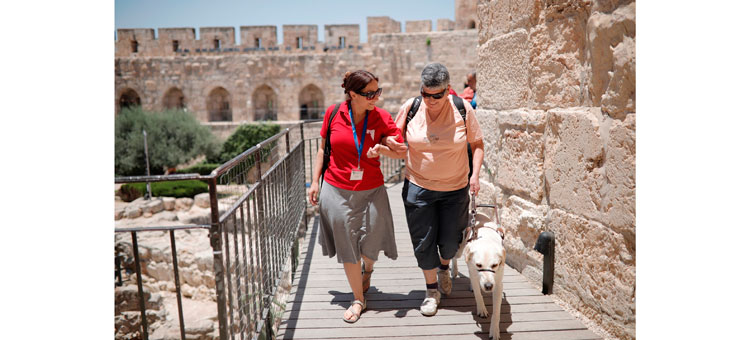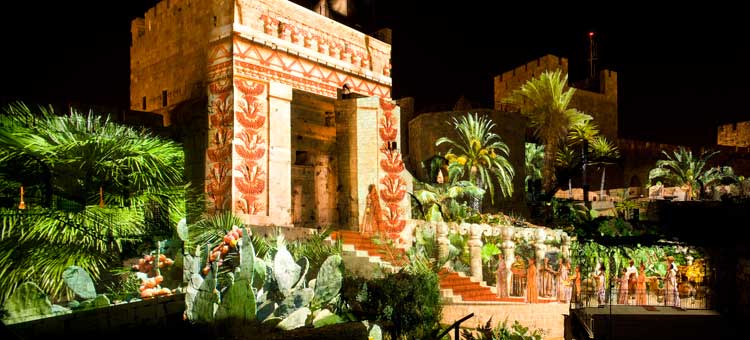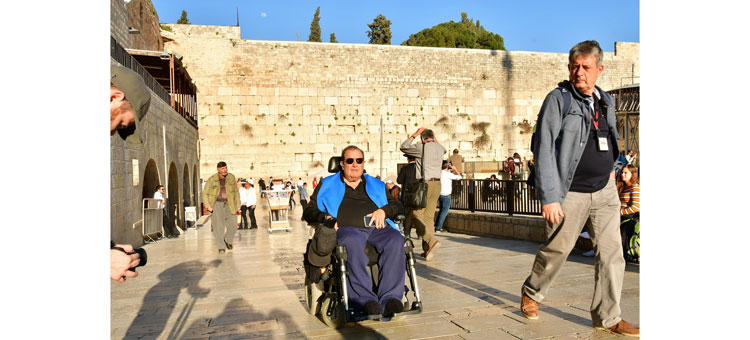Jerusalem: The Old City of Jerusalem has become more accessible for both wheelchair users and the visually impaired, thanks to improved infrastructure and audio apps to help residents and visitors better navigate the small streets and alleyways of the Old City. The accessibility of the Old City is an innovative and groundbreaking project that enables wheelchair bound residents and visitors to enjoy the historic and cultural wealth of the city. Among other things, four kilometers of streets in the Muslim, Armenian and Christian quarters were adapted, and about 2 kilometers of handrails were installed alongside staircases. The accessibility is carried out with the cooperation of the merchants and the residents of the area.
The Old City of Jerusalem and its walls are a UNESCO World Heritage Site and therefore are subject to special preservation rules designed to present the city and its heritage to its visitors, while developing and upgrading it to the benefit of its residents and employees. The Old City is the most visited place in Israel with about 10 million visitors each year.
The accessibility of the picturesque alleys of the Old City is intended to ease the congestion in the main streets and to enable wheelchair users, the users of freight carts (including strollers), and other handicapped people, to visit the city’s tourist attractions with greater ease. Facilitation includes: Roads fixing; Fixing and renovation of public services (including accessible); Adding direction and explanatory signs to the main sites and spatial maps along the main tourist routes; Upgrading the current cleaning and garbage collection system; Replacement of stone cladding; Highlighting historical or archaeological findings of public interest; Installation of infrastructure cladding for water clocks and a garbage collection point in the tourist area according to the “street language”; Renewal of business complexes, facades and facilities along the route; And the completion of promenades from Zion Gate to the Dung Gate along the northern outer wall.
In order to complete the process, the East Jerusalem Development Company also produced a printed accessibility orientation map along with a dedicated application in 8 languages that enables real-time navigation between the alleys and sites (GPS-based, similar to Google Maps).
Visitors to the Old City are invited to download, free of charge, accessible guided tours in the “Vocal Tours of the Old City” application (in the Jewish Quarter, Via Dolorosa, Temple Mount, Jaffa Gate and Zion Gate).
In addition, the Center for the Blind in Israel has made available an app that has made the Old City of Jerusalem accessible to the blind with special audio tours.
The Tower of David Museum, located at the gateway to the Old City, has made its flagship night show, known to all for its spectacular visual content, accessible to the blind and visually impaired with a descriptive audio accompaniment – the first of its kind in Israel. In conjunction with the Central Library for the Blind and Visually Impaired, an audio description (in Hebrew and English) narrates each scene presented in the show, which depicts each different historical period. The uniqueness of audio description is that it is embedded in the Night Experience’s screening technology automatically, and is delivered through cordless headphones which are easy to use.
The Tower of David Museum also runs special tours for visitors who are visually impaired where visitors get to feel “history” by having hands-on experiences, touching the different faced stones from the time periods of the city’s history from the stone masonry from 2000 years ago and King Herod’s elegant huge blocks of stones to the rougher stones from the Crusader’s time period and onwards. The Museum also had models of the Jerusalem that show the development of the city as well as a model of the actual citadel itself allowing visitors who may not be able to see the development of the city – feel and listen to the history of the city unravel.
The Old City accessibility project is being funded by the Jerusalem and Heritage Ministry and the Jerusalem Development Authority, together with the Ministry of Tourism, the Accessibility Department of the Jerusalem Municipality, the National Social Security Agency and the Israel Antiquities Authority, carried out by the East Jerusalem Development Company and accompanied by accessibility consultants according to local topographical restrictions, at a cost of over 20 million NIS.








